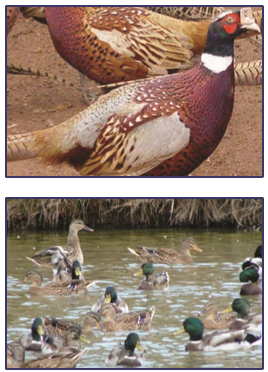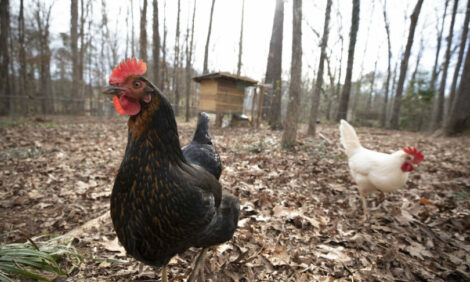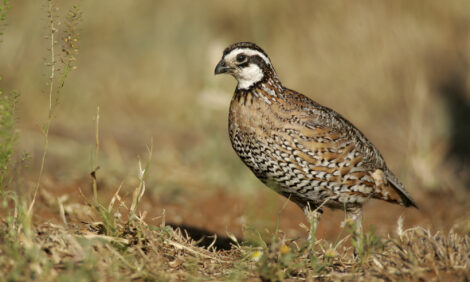



US Poultry Industry Manual - The game bird industry
Learn more about the US game bird industryPart of Series:
< Previous Article in Series Next Article in Series >

Editor's Note: The following content is an excerpt from Poultry Industry Manual: The Foreign Animal Disease Preparedness and Response Plan (FAD PReP)/National Animal Health Emergency Management System (NAHEMS) Guidelines which is designed to provide a framework for dealing with an animal health emergency in the United States. Additional content from the manual will be provided as an article series.
The term “game bird” describes any species of bird that can be used for hunting, including upland game birds, waterfowl, and woodland birds, such as the American Wood Cock and Mourning Doves. However, only those species which are captive, reared in significant numbers, and raised-for-release will be discussed in this chapter.
The game bird industry, with producers organizing into national and state associations, began as early as the 1940s. However, significant growth in the industry was noted starting in the 1970s and has continued to increase into the present time. The reason for this growth is believed to be due to the rapid decline of native birds, which reduced opportunities for successful harvesting of wild game on rural lands.
Decline of the native game bird population is believed to be the result of changing agricultural practices that caused a loss of habitat and cover for native game bird species. Game bird production is used to supplement wild populations while hunting preserves increase opportunities to successfully harvest game birds. Development of hunting preserves was also seen as a good use of existing agricultural land not used during fall and winter months. Game birds could be released onto crop land at the end of the growing season to derive income for the farmer over the winter.
Groups of birds
Game birds can be divided into two main groups: Upland Game Birds and Waterfowl
Upland game birds include birds in the order Galliformes, family Phasianidae:

Common Pheasant (Phasianus colchicus):
- Also known as the ring-neck pheasant (pictured left, top). It is native to Russia, but became widely dispersed throughout Europe and Asia. Pheasants were brought over to North America as early as the 1700s.
Partridges:
- There are three species commonly produced for hunting in the USA including Chukar Partridge (Alectoris chukar), Red-legged Partridge (Alectoris rufa) and Grey Partridge (Perdix perdix), also known as the Hungarian Partridge. Chukar Partridges originated in Eurasia, Israel, Turkey, Afghanistan, India, and Pakistan.
Northern Bobwhite Quail (Colinus virginianus):
- These birds are native to the New World, including the USA, Mexico, and the Caribbean.
Waterfowl include birds in the order Anseriformes, family Anatidae:
Mallard Duck (Anas platyrhynchos):
- Widely dispersed dabbling duck (pictured below) found throughout North America and Eurasia and introduced almost everywhere else
General profile of the commercial US game bird industry
The game bird industry consists of two primary sections: production farms and hunting preserves.
Production farms
Game birds are produced in almost every state in the U.S. However, certain geographic locations tend to produce more of certain species of game birds. Most Bobwhite Quail are grown in Georgia, North Carolina, South Carolina, Alabama, and Mississippi. Top pheasant producing states include Minnesota, Kansas, North Dakota, Pennsylvania, South Dakota, and Wisconsin. Mallard ducks are produced primarily along the United States coastal areas, with large releases found on the mid-Atlantic and southern states.
Game bird production in the United States is estimated to consist of 10.8 million pheasants, 40 million quail, 4 million Chukar partridges, and 1 million mallard ducks.
Types of Production
Game bird producers can be divided into full-time commercial businesses, part-time commercial businesses, and hobby operations.
1. Commercial full-time production operations
- Most of these operations produce 20,000 to 300,000 birds annually, with a few having even more. Large commercial game bird farms are relatively few in number.

2. Hobby or part-time commercial operations
- Most game bird farms in this category raise anywhere from 100 birds to 15,000 birds each year.
Hunting Preserves
Most game birds are grown for eventual release onto regulated hunting preserves. However, some are released onto public lands, while a few are sold to restaurants, food retail outlets, and live bird markets.
Types of Hunting Preserves
Regulated hunting preserves can be classified as either public or private.
1. Public Preserve
- Approximately 80% of preserves are open to the public. They operate on set hours and anyone can show up and pay for the opportunity to harvest a game bird.
2. Private Preserve
- An approved membership at the preserve would be required before one would be allowed the opportunity to hunt.
Reference: "USDA APHIS | FAD Prep Industry Manuals". Aphis.Usda.Gov. 2013. https://www.aphis.usda.gov/aph...
The manual was produced by the Center for Food Security and Public Health, Iowa State University of Science and Technology, College of Veterinary Medicine, in collaboration with the USDA Animal and Plant Health Inspection Service through a cooperative agreement.















